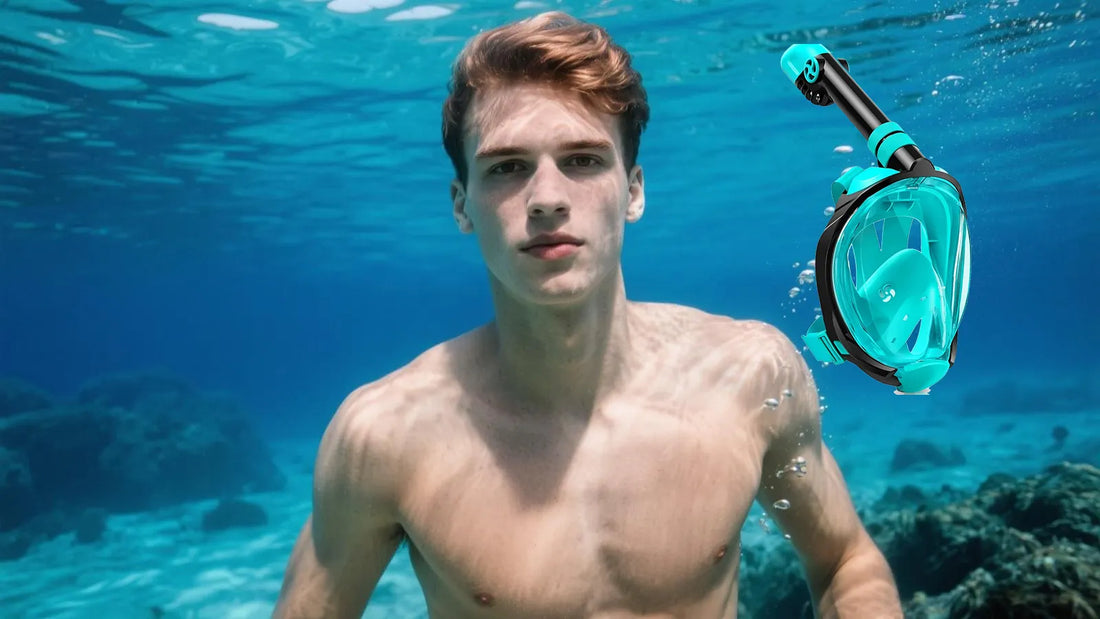There's nothing more frustrating than gearing up for an exciting snorkeling adventure, only to find your mask fogging up the moment you hit the water. A foggy mask can ruin your experience, making it difficult to enjoy the vibrant marine life and stunning underwater landscapes. But why does this happen, and what can you do to prevent it? In this comprehensive guide, we'll explore the reasons behind foggy snorkel masks and share expert tips to ensure crystal-clear vision every time you dive in.
The Science Behind Foggy Snorkel Masks
Fogging occurs when warm, moist air from your breath comes into contact with the cooler surface of your mask lens. This temperature difference causes the moisture in your breath to condense into tiny water droplets on the lens, creating a foggy layer. While this phenomenon is natural, it can be incredibly annoying when you're trying to enjoy the underwater world.
Another factor contributing to fogging is the presence of oils, dirt, or residue on the lens. These substances can create a surface that encourages condensation, making fogging more likely. Understanding these causes is the first step toward finding effective solutions.
Common Mistakes That Lead to Foggy Masks
Many snorkelers unknowingly make mistakes that increase the likelihood of their masks fogging up. One common error is failing to clean the mask properly before use. Even new masks often come with a thin layer of manufacturing residue that can cause fogging. Skipping this crucial step can set you up for a frustrating experience.
Another mistake is using improper defogging techniques. Some people spit into their masks, believing it will prevent fogging, but this method isn't always effective and can leave residue behind. Others rely on commercial defogging solutions but fail to apply them correctly, reducing their effectiveness.
Effective Ways to Prevent Your Snorkel Mask from Fogging
Preventing fogging starts with proper mask preparation. Begin by thoroughly cleaning the lens with a mild soap or specialized mask cleaner to remove any oils or residues. Rinse the mask well to ensure no soap residue remains, as this can also contribute to fogging.
Once your mask is clean, consider using a defogging solution. These products create a thin, invisible layer on the lens that prevents condensation from forming. Apply the solution according to the manufacturer's instructions, and rinse it off lightly before use. Alternatively, you can use natural remedies like baby shampoo or toothpaste, which can also create a protective layer on the lens.
Another effective technique is to ensure your mask fits properly. A well-fitting mask reduces the amount of warm air entering from the sides, minimizing the chances of fogging. Adjust the straps for a snug but comfortable fit, and make sure the mask seals tightly against your face.
Tips for Maintaining a Fog-Free Mask During Your Snorkel
Even with proper preparation, fogging can still occur during your snorkel. To combat this, avoid touching the inside of the lens with your fingers, as oils from your skin can cause fogging. If your mask does start to fog, briefly lift it to allow a small amount of water to enter. Swish the water around the lens to clear the fog, then drain the water before resealing the mask.
Breathing techniques can also help. Try to exhale through your nose rather than your mouth, as this reduces the amount of warm, moist air entering the mask. Additionally, avoid overexertion, as heavy breathing can increase the moisture inside the mask.
Long-Term Solutions for a Fog-Free Snorkeling Experience
For those who snorkel frequently, investing in a high-quality mask with anti-fog technology can make a world of difference. These masks are designed with special coatings or materials that resist fogging, providing long-lasting clarity. While they may be more expensive, the investment is often worth it for the enhanced experience they offer.
Regular maintenance is also key to preventing fogging over time. After each use, rinse your mask thoroughly with fresh water to remove salt, sand, and other debris. Store it in a cool, dry place away from direct sunlight, as prolonged exposure to heat can degrade the lens and reduce its anti-fog properties.
By understanding the causes of fogging and implementing these practical solutions, you can enjoy a fog-free snorkeling experience every time. With crystal-clear vision, you'll be able to fully immerse yourself in the beauty of the underwater world, making your adventures even more memorable.
Don't let a foggy mask spoil your next snorkeling trip. Armed with these tips and techniques, you'll be ready to dive in with confidence and enjoy the wonders beneath the surface. Happy snorkeling!

